
This article appeared in Skeptic magazine 18.1 (2013).
OKLAHOMA CITY, COLUMBINE, Virginia Tech, Sandy Hook. The list of mass murders in America grows and grows. Why? And what can we do about it? I have a personal interest in the problem of violence and mass murder. I was in Oklahoma City at the time of Timothy McVeigh’s bombing of the Federal building. I joined the Air Force on September 11, 2001. I served a tour of duty in Kabul, Afghanistan, where periodic terrorist attacks and occasional mass murders were a fact of life. I would like to bring to bear on this problem both my personal experiences with human violence and my scientific training as an aerospace engineer and data analyst.
In this article I have aggregated large amounts of data from reputable sources with an aim toward providing evidence-based suggestions for possible solutions. First, I sampled data in the public domain from Wikipedia, the Center for Disease Control and Prevention (CDC), the Federal Bureau of Investigation’s (FBI) Uniform Crime Reports (UCR), published research papers, reputable news media outlets, and firsthand accounts. I also interviewed police officers, doctors, and social workers.
We begin with the definition of mass murder as four or more murders at a single location (a school, workplace, home, or public place) during the same incident without any pause in between.1 We can then consider how mass murderers select their targets. Using aggregated data from Wikipedia2 for the U.S. from the 1800s to the present, schools were selected primarily by teenagers (peaking at 17), other people’s homes (“Home Intruder”) were selected primarily by people in their 20s (peaking at 25), public places were selected by people in their 30s (peaking at 35), and workplaces and one’s own home (“Familicides”) were selected by middle-aged people (peaking at 40). Notable Incidents (like the Oklahoma City Bombing) and Soldier Fratricides were included later in the mass murder dataset, but were too few to be statistically significant on their own (Figures 1 and 2).
Click any graph in this article to download larger versions in PDF.
A single PDF (378 kb) contains all graphs.
In other words, people still in school tend to select a school, people with a family at home tend to select their home, people with a job tend to select their workplace, people who are out of school but don’t have a job or family tend to select other people’s homes and public places. This probably means that a person who commits mass murder selects their location based on targets of opportunity.
Even though most people who commit mass murder were never in the military, such target selection is military, gang, or terrorist (as opposed to civilian) in nature. In civilian life, one person might attack another person to remove an obstacle to a desired outcome (such as killing someone during a robbery) or to retaliate (such as killing a person after being attacked). In the military, gangs, and terrorist organizations, people attack other people based on their association with a leader or organization (such as attacking an outpost because it is controlled by an opposing military and not because of anything the individuals being attacked did or will do). This is a legal distinction that might not exist in the mind of a person who commits mass murder (or warring gangs or terrorist organizations), but it is important to note that people who commit mass murder appear to be operating as if under military rules of engagement.
Common Elements of Mass Murders and Murderers
Mass murders were committed primarily by a single attacker (98.6%), whose average age was 34.4 and when a second attacker was present, both were typically young men (average age of 19.4). Attacks killed 9.0 people and injured 9.6 people on average, excluding the attacker. Many of the attackers were related to at least one victim (38%), and a few also killed animals (3.1%). Wikipedia data does not indicate the sex of the attackers, but judging based on first names and additional Google searches (where available), 90% were men, 6% were women, and 3% were unsolved. Of the attacks conducted by women, one was workplace (post office) and the rest (94%) were familicides. Also, most of the women were in their 40s, which is consistent with the ages of attackers at home or work. The attackers typically used a gun (73%), but sometimes the instrument was a melee weapon (such as an axe, club, or bare hands, 30%), or arson (12%). (The total adds to more than 100% because often more than one weapon was used. Figure 3.)
The attack often ended when the police confronted the killer and then the killer committed suicide (39%, including people who died from their own fire, explosion, etc.) or was shot dead by the police (11%). While the killer occasionally died at the hands of an angry mob (1%), rarely did an armed civilian kill an attacker (0% in the U.S., 1 recorded incident in Israel where an armed student killed an attacker), and unarmed heroic civilians who charge the attacker frequently got killed. Of the killers who were taken alive, many were executed by the state (10% of captured, 5% of total) or spent the rest of their life in prison (34% of captured, 19% of total). Several were sentenced to less than life in prison (2.8%) for an average of 29 years. A few were found not guilty by reason of insanity or found mentally unfit for trial (3%).
Regardless of sentencing, authorities typically discover the attacker’s mental instability and extreme beliefs. Byran Uyesugi, a schizophrenic Hawaiian working at Xerox, believed he was being racially discriminated against, precipitating his 1999 attack, even though no one else perceived the discrimination.3 Maj. Nidal Hassan, a Palestinian-American, believed he was being discriminated against by his fellow army officers for being Muslim (rather than his documented poor job performance), and he believed that Muslims in Iraq and Afghanistan should rise up and throw the U.S. out of the Middle East and he would help that process at home, leading to his rampage at Fort Hood in 2009.4 Timothy McVeigh believed he was at war with the U.S. Federal Government and he was going to lead a revolution by blowing up the Federal building in Oklahoma City in 1994.5 Jared Loughner, a schizophrenic, believed in government conspiracy theories and was angered by Congresswoman Gabriel Giffords because he believed women should not hold positions of power, which he aimed to end with his 2011 shooting spree.6 Eric Harris wanted to be infamous for killing a lot of people and he enlisted Dylan Klebold to help him slaughter their fellow students at Columbine High in 1999.7 And the University of Texas Tower Sniper Charles Whitman had a brain tumor on his hypothalamus pressing against his amygdala when he wrote, “lately (I cannot recall when it started) I have been a victim of many unusual and irrational thoughts,” which he acted out with a rifle in 1966.8
Whitman is a rare example because his tumor can be used to explain which part of the brain was responsible for mass murder. While it’s possible other people who committed mass murder also had a brain tumor, it’s likely that the tumor changed Whitman’s hypothalamus and amygdala to match the circuitry or hormones of other people who committed mass murder, like installing malicious software on a computer. As the tumor physically changed his brain, Whitman realized something was wrong and tried to get help. When help failed, he executed the task the tumor had reprogrammed his brain to perform—mass murder.
Warning Signs
A common misconception is that all people who commit mass murder have a psychotic break with reality and attack without warning. In fact, each person who committed mass murder typically experienced a period of mental decline over a year or more. For example, battle-induced stress from the First Gulf War in 1991 was clearly a major factor in Timothy McVeigh’s life path, as he frequently made references to war and combat until he died. After leaving the Army, McVeigh got a job as a security guard, which he left to drive around the country and visit old military friends. After being rejected romantically, he began gambling and lived with his family for a while. He routinely espoused anti-government rhetoric and eventually quit the National Rifle Association (NRA) because he felt their stance on pro-gun laws was too weak. When he saw the federal siege at Waco in 1993, he traveled there to pass out pro-gun literature. In Waco, McVeigh met Terry Nichols, who taught McVeigh how to make improvised explosive devices.
So instead of a sudden “snap,” McVeigh transformed over several years into the man who on April 19, 1995, detonated a truck filled with explosives next to the Murrah Federal Building in Oklahoma City, killing 168 people including 19 children in the daycare and injuring 680. Afterward, McVeigh did not appear to feel any remorse for his victims, and instead coldly opined that they were collateral damage in his war with the U.S. government.9 If we accept McVeigh’s premise, then we might agree that the bombing was a normal act of war. However, reasonable people don’t accept that McVeigh was at war with the U.S. government, and instead see his action as a criminal act. McVeigh demonstrates how specific, violent delusions are the defining feature of people who commit mass murder.
Similarly, starting at least a year before their big attack at Columbine, Eric Harris and Dylan Klebold committed smaller crimes, outlined plans for their attack, illegally acquired guns, and practiced making and detonating pipe bombs before killing 15 people and injuring 21 at their high school.10 That same year Sung Hui Cho saw the media reports of the Columbine attacks on the news and wrote in an 8th grade school assignment that he wanted to “repeat Columbine.” Years later, his college classmates joked that Cho was, “the kind of guy who might go on a rampage killing,” primarily because of his violent writing in school assignments and awkward social behavior. All along, Cho’s mother knew that something was wrong with her child, but when he turned 18 he was an adult and she couldn’t legally intervene as his parent. A judge even ruled that Cho should be treated as an outpatient (instead of forced hospitalization) for mental disorders. This was a year and a half before Cho killed 32 and injured 17 at Virginia Tech in 2007.11
Jared Loughner’s personality changed five years before he attacked Congresswoman Gabby Giffords and five others, including U.S. District Court Judge John Roll. After the attack, he was diagnosed with schizophrenia and forced to take antipsychotic medications.12
Many more examples may be found on the Wikipedia pages listing rampage attacks—click on each link and read the biographies of a wide variety of attackers. Sometimes the motivations are criminal, drug-related, political, or unknown, but those are the exceptions. Most people who commit mass murder have at least one major mental disorder,13 specifically some form of delusion,14 and the symptoms get worse over time. This mental decline has noticeable effects on the person’s life, and peers and others who interact with that person know something isn’t right.
The inspiration for these mass murderers appears to feed on itself. Timothy McVeigh, for example, was inspired by his battlefield experience in the First Gulf War and the siege at Waco. Eric Harris was inspired by the Oklahoma City Bombing. Sung Hui Cho was inspired by Columbine. Major Nidal Hassan was inspired by the Little Rock Recruiting Station attack. Each of these people talked or wrote about prior attacks and specifically mentioned that they wanted to either emulate them or avenge them. In the same way the continuous sensational news coverage traumatizes average citizens, it energizes some people to commit mass murder.
Will Banning Assault Weapons Solve the Problem?
At the time of this writing, gun control proponents are introducing legislation to reinstate the 1994 Federal Assault Weapons Ban. What effect will this have? In 2003, the Centers for Disease Control (CDC) reviewed studies of Gun Control legislation,15 including the 1994 Federal Assault Weapons Ban (which expired in 2004), and they concluded that the available studies were inconclusive, had methodological errors, or were inconsistent with other studies.
One reason studies of assault weapons and other gun control methods showed little effect is likely because handguns are the weapon of choice for homicide (68% of gun-related homicide, 46% of all homicide).16 Unlike rifles, handguns are concealable and easy to carry and store. Also, based on personal anecdotal experience, the people I know who own an assault rifle also own handguns. That is, eliminating assault weapons has no significant effect on gun violence because assault weapons are relatively uncommon, infrequently used, and typically owned in conjunction with handguns (Figure 4).
Did the Assault Weapons Ban have an effect on the number of mass murder incidents? No. During the Federal Assault Weapons Ban, 29 mass murder attacks occurred in the U.S., including the Oklahoma City Bombing and Columbine.17 The ban didn’t appear to have a significant impact on the number of mass murder incidents in that decade compared to other decades, and within the decade, there was no downward trend. This only shows that the availability of assault weapons doesn’t change the number of mass murder incidents, which means that killers just switched to different weapons, obtained illegal weapons, or made improvised weapons (Figure 5).
Perhaps the Assault Weapons Ban had an effect on the number of mass murder victims. During the ban, large attacks like the 1995 Oklahoma City bombing and the 1996 Atlanta Olympic Park Bombing occurred, and the average number of people killed per incident increased from 9.4 pre-ban to 11.3 during the ban, then decreasing to 7.6 after the ban expired. The average number of people injured per incident increased from 8.0 to 35.0 during the ban and decreased to 5.6 after the ban. There may have been a downward trend during the ban, but the dataset is too small and too random to draw a strong conclusion (Figure 6).
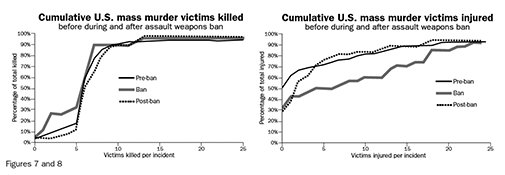
Figure 7: Cumulative U.S. mass murder victims killed before, during, and after assault weapons ban
Figure 8: Cumulative U.S. mass murder victims injured before, during, and after assault weapons ban
Examining the effects of the ban from a different perspective, these graphs ( Figures 7 and 8) show U.S. mass murder victims killed and injured before, during, and after the assault weapons ban. Approximately 15% more incidents resulted in 5 or fewer victims killed during the ban than before or after the ban. Conversely, approximately 25% more incidents had 12 or fewer victims before or after the ban than during the ban. That is, the data indicate that the Assault Weapons Ban may have moved victims from the killed to the injured columns per incident.
Figures 9 and 10 examine the effects of all gun-related incidents by type of gun: semi-automatic guns (rifle or shotgun), long guns (manual rifle or shotgun), and handguns.18 Results indicate that the number killed per incident didn’t show any significant differences based on type of firearm. However, the number injured showed that semiautomatic weapons result in more injuries than handguns or long guns.
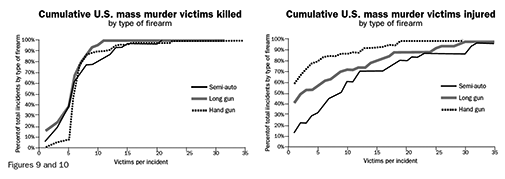
Figure 9: Cumulative U.S. mass murder victims killed by type of firearm
Figure 10: Cumulative U.S. mass murder victims injured by type of firearm
In real-world mass shootings, semi-automatic weapons were no more or less deadly than other guns, but they did result in more injuries. However, when semi-automatic weapons were banned, then the number of killed decreased and the number injured increased. Seemingly contradictory evidence, such as this, typically indicates a complicated set of interactions or an insufficient sample size (so the effects may be due to random chance alone). Based on this analysis, a similar ban on assault weapons won’t have a significant impact on general homicide rates and it won’t change the number of mass murder incidents, but it may reduce the morbidity and mortality of each mass murder incident.
What About Carrying Concealed Handguns?
It is reasonable to assume that criminals will ignore legal restrictions on weapons. As such, concealed carry licenses are designed to give law abiding citizens the opportunity to defend themselves before the police arrive, which could be five minutes or more. Data above also clearly show that an active shooter19 attack can only reliably end when the attacker is physically disabled. That is, armed citizens need to be able to shoot and kill the attacker in a crowded area (not just shoot at the attacker) or physically restrain the attacker (not just charge at the attacker). They also need to be able to handle other people responding to the same situation.
For example, Joe Zamudio20 was legally carrying a concealed handgun in Arizona one day when he heard gunshots. He ran toward the gunfire and saw a man with a handgun in a malfunction condition on top of another man, shouting, “I’ll kill you, you motherf****r. I’ll kill you.” Leaving his weapon in the holster Zamudio grabbed the man’s wrist and instructed him to put down the weapon, which he did. The man was Roger Sulzgeber, who in addition to retired Army Colonel Bill Badger and Patricia Maisch,21, 22 saved many lives by tackling Jared Loughner after Loughner’s weapon malfunctioned approximately one minute20, 23 after opening fire. Sulzgeber’s aggressive comments were an emotional response to witnessing Loughner shoot 20 people and nearly being shot himself. Once Sulzgeber put down the weapon, Zamudio helped Badger, Sulzgeber, and Maisch to restrain Loughner for about four minutes20, 23 until the police arrived. Contrary to press reports,24 Zamudio did not almost shoot the wrong person, as his weapon was never removed from his holster. If Zamudio had been an armed off-duty police officer, instead of an armed citizen, then he probably would have behaved similarly in the chaos of the situation. The real lesson is, if you have any doubt about taking a shot, then do whatever it takes to resolve your doubts before shooting or just get away and let the police handle the situation. Ultimately, if Loughner’s weapon hadn’t malfunctioned, then Zamudio would have likely been the first armed person on scene to engage Loughner for the next four minutes. As such, armed citizens with the proper training could stop up to 30 to 40 deaths by mass murder per year on average.
In addition to concealed carry laws, states have recently enacted “Stand Your Ground” or “Castle” laws, first in Florida in 2005 and in 20 states since. In every state, everyone is allowed to use deadly force to protect themselves in their own home, provided the attacker isn’t retreating. But everyone was expected to retreat from a fight in a public place until these laws specifically allowed a person not to retreat (that is, “stand your ground”). A recent study by Cheng Cheng and Mark Hoekstra at Texas A&M University indicates that an extra 600 homicides occur in the U.S. each year because of these laws.25, 26 Why might this be? Of the 13,756 homicides counted in the 2009 FBI27 Uniform Crime Reports (UCR) data, 3,368 (24.4%) were started because of “Other Arguments” (an argument not over money or property). This is more than all the 2,051 (14.9%) “Felony Homicides”28 and 1,495 (10.9%) “Non-Felony Homicides”29 (excluding “Other Arguments” listed above and the 1,996 or 14.5% of “Non-Felony Not Specified”). That means that alcohol, drugs, prostitution, and gangs combined killed fewer people than arguments did in the U.S. in 2009. The only category with more homicides is “Unknown,” which could mean unsolved, solved enough for the detectives to get an arrest and move on to the next case, or fully solved but poorly documented (Figures 11 and 12).
Further, homicide rates in the U.S. in 2010 show that for every woman who committed homicide, 9.3 men committed homicide, and 3.8 homicides went unsolved. For both men and women, the peak age to both kill and be killed was 20 to 24 years old. That is, most homicides take the form of a young man killing another similarly aged man, probably as a result of an argument.
The likely explanation that Concealed Carry plus Stand Your Ground laws result in 600 more deaths per year is that a young man with a concealed weapon in an argument is more likely to escalate the dispute and think he is standing his ground. As a result, arguments that would have ended in a fistfight are more likely to end in a gunfight.
Are There any Middle-of-the-Road Gun Control Recommendations?
Given the realities of chaotic shooting environments, at the very least states that allow citizens to carry concealed weapons should also establish annual training requirements to include basic gun safety and how to deescalate arguments and other confrontations without resorting to violence. Otherwise, allowing untrained citizens to carry concealed weapons and engage in a fight as if they were a police officer clearly results in more homicide deaths than mass murder deaths per year. Also, public schools should consider teaching techniques to deescalate arguments (especially for young men) as part of the standard curriculum.
Next, victims (or family members of victims) of gun crimes or negligent discharges aren’t currently compensated in the U.S. for emotional distress, injury, or death. To change this, legislation could require a gun owner to either pay for private liability insurance prior to purchasing or transferring ownership of a weapon (similar to mandatory auto insurance) or pay a federal tax for the government to compensate victims of gun violence directly. Like all insurance, this would allow citizens to engage in potentially risky behavior and put a price on the risk to be paid by the people creating the risk. Similar to auto insurance, a young man would pay significantly more in gun liability insurance than an older woman. Also, receiving yearly safety training and properly securing guns in the home would probably reduce gun insurance rates regardless of age or sex, and everyone who owns a gun should do this anyway. Insurance companies could also test clients for psychological risk factors, such as psychopathy or delusional thinking. As a result, people at a very high risk to commit gun violence would be unlikely to receive affordable liability insurance. Criminals and those who are irresponsible will likely have uninsured and untaxed firearms, and tax evasion is a crime. This would give law enforcement another method to throw criminals in jail for possessing guns illegally.
When it comes to new legislation on gun ownership, we could look at gun laws like drinking laws. When it was discovered that lowering the drinking age to 18 increased the number of drunk drivers, many states increased the drinking age to 21, and later the federal government established a national mandate. While it’s still legal in many states for parents to give alcohol to their underage children, bars, restaurants, and stores can’t sell alcohol to anyone under 21.30 Further, if a minor commits a crime in general, then the parents may be liable in civil court to pay for the damages because parents are expected to control their children. With that in mind, mass murder with a gun is part of the larger problem of homicide with a gun and so homicide should be part of the consideration. Of all homicide offenders 60% were under 30 and 90% were under 50. Similarly, the 60% of all people who commit mass murder were under 35 and 93% were under 50, and they were mostly male. In other words, the risk of committing violence doesn’t decline until after 30 to 35 (Figure 13).
Based on this analysis, states could raise the legal age for men to purchase a firearm from 18 to 35 years old, and/or they could allow anyone under-legal-age who wants to use a gun to have a legal-age surrogate purchase the gun on their behalf. Should the underage person use the weapon to commit a crime, the perpetrator would still be responsible in criminal court. However, the surrogate would be civilly (i.e., monetarily) liable to any victims even if the gun was used without the surrogate’s knowledge or permission. Functionally, this means the surrogate must purchase liability insurance or pay the tax for the gun. In other words, states can shift civil responsibility for gun violence to older, more responsible family members and friends, and let them adjudicate their personal affairs, as was done with drinking laws.
What Can We Do to Prevent the Next Mass Murder?
Most people are fixated on guns and gun laws, but what about prevention? These analyses show the primary risk factors for a person to commit mass murder are being a male under the age of 35 who suffers from violent delusions and whose condition is likely deteriorating over the course of one or more years. If we want to prevent mass murder, we must address mental health care for people with delusions and schizophrenia.
Diagnosis is a good first step. The peak age for onset of schizophrenia in males is 22 (average 22.5), but males are first admitted for schizophrenia at the age of 28.2 on average (6 years after onset). Likewise, the age of peak onset in females is also 22 (average 25.5 due to higher probability of late onset, especially around menopause), and females are admitted at the age of 32.2 on average (7 years after onset). In both cases, admissions typically occur shortly after the individual experienced their first psychotic episode.31 By the time a person with schizophrenia has a psychotic episode, they are also likely to have experienced negative symptoms of schizophrenia for 4 to 6 years,32 and positive symptoms of schizophrenia for 2 years.33 Clearly, there is significant opportunity to intervene and treat people with schizophrenia long before they have a psychotic episode.
Not all people who commit mass murder are schizophrenic. Many are just delusional. Considering that delusions are one of the symptoms of schizophrenia, it seems reasonable to assume that there would be more people with delusions only than with psychotic episodes, hallucinations, and delusions combined. Yet, schizophrenia is diagnosed in 0.8% of men and 0.4% of women,34 whereas Delusional Disorder is so rare I couldn’t find a reliable source. Either the mechanisms in the brain that cause delusions almost always cause psychotic episodes and hallucinations, or delusions are significantly underdiagnosed. The latter is more likely because the onset of symptoms of schizophrenia do not occur all at once, but steadily increase over 6 or 7 years, indicating separation of symptoms. Also, people with schizophrenia are typically only diagnosed after their first psychotic episode, but people with delusions don’t exhibit psychotic episodes that attract attention. Finally, we all know someone at work or school who has a lot of weird beliefs and they suffer because of it. Those people don’t choose to be that way; they likely have an undiagnosed and untreated mental disorder; however, if you ask them, they probably think everyone else is delusional. As such, the diagnosis rate of delusions is likely negligible.
It is also important to note that delusions or schizophrenia don’t necessarily make someone dangerous because not all delusions are violent, and many other mental health problems do not result in any violence or crime at all. However, practically all mental health problems result in reduced productivity at home, school, and work (almost by definition). That is, mental health is more than just one type of disorder. In 2011, the CDC concluded: “In 2004, an estimated 25% of adults in the United States reported having a mental illness in the previous year. The economic cost of mental illness in the United States is substantial, approximately $300 billion in 2002.”35
The U.S. could prevent at least some of the mass murders and help up to 25% of adults at the same time by implementing yearly mental health checkups. One way to enforce this would be to enact a school and workplace mandate for students and workers, especially men under 50 who are the most at risk population to commit homicide, mass murder, and other irreversible acts of violence. Schools and workplaces already can turn people away for not receiving yearly vaccines as a public safety matter, which sets a legal precedent for physical health that could be extended into mental health. Of course, this would mean that employees and parents of students would need expanded insurance coverage for mental health, meaning employers must recognize that paying for family mental health insurance would improve site security and worker productivity.
Unfortunately, checkups alone might not be enough because the type of individual who is at risk to commit mass murder is not likely to seek out professional help. Yet people have lived around others with mental disorders for millions of years and likely evolved circuits to recognize risk factors. As such, classmates, neighbors, parents, coworkers, friends, and others usually recognize that a problem exists long before something irreversible happens. The primary problem in modern society has been passing this recognition to someone who can do something. Then, how are authorities supposed to act without violating other people’s rights?
The department of Health and Human Services (HHS) or a private aid agency could set up an intervention hotline where people who see someone with a mental health issue can call in and request an intervention. Then HHS could dispatch a social worker to interview and assess the individual. Based on that assessment, the social worker could either help that person find the appropriate health care provider if he or she is cooperative, or gather enough evidence to demonstrate to a judge that this person is a danger to himself, herself, or others, appoint a legal guardian to act on his or her behalf, and treat the unwilling person.
Building the hotline will be a challenge. The goal is that when we think a person needs help or a person makes us feel concerned for our safety, we won’t hesitate to use the hotline. This means the operators will need to protect those who call and intervene discreetly and quickly. Simple procedures could also be put in place to prevent hotline abuse. For example, calls and other requests could be attributed to a phone or user, recorded, and stored for five years. Instead of responding to every request, HHS could wait for a second person to make a request as a form of independent verification. Social workers could also interview people who know the individual in question before approaching the individual. Also, prank callers to the hotline may think it’s funny until they spend a night undergoing a thorough psychological evaluation. On the other hand, maybe the caller reporting “government mind control” really is the person who needs help.
Providing access to mental health care and a mechanism to discreetly initiate an intervention will not just potentially save the lives of mass murder victims, it will also help many other people with a disorder to get help.
Conclusion
Mass murder is primarily a crime committed by men with violent delusions who respond by attacking targets of opportunity. At best, decreasing the availability of assault weapons or increasing the number of armed citizens has had limited success in the past and does not address the root cause. To solve the problem, we need to shift our focus from better response to better prevention. Specifically, routine mental health checkups and an intervention hotline operated by social workers would provide a clear, direct path to get people the help they need before they do something irreversible. Ultimately, everyone will be happier and more productive, and in the long run lives will be saved. ![]()
References
- FBI. 2005. Multi-Disciplinary Perspectives for Investigators. FBI.gov. September 2. [Cited: December 31, 2012.]
- List of Rampage Killers. Wikipedia.org.
- Xerox Murders. Wikipedia.org.
- Nidal Malik Hasan. Wikipedia.org.
- Timothy McVeigh.Wikipedia.org.
- Jared Lee Loughner. Wikipedia.org.
- Eric Harris and Dylan Klebold. Wiki pedia.org.
- Charles Whitman. Wikipedia.org.
- Timothy McVeigh. Wikipedia.org.
- Eric Harris and Dylan Klebold. Wikipedia .org.
- Seung-Hui Cho. Wikipedia.org.
- Jared Lee Loughner. Wikipedia.org.
- Frequently, they have a second or related disorder, like schizophrenia or psychopathy.
- A delusion is defined as a fixed false belief where the believer cannot be persuaded to another belief despite being presented with contrary evidence.
- Robert A. Hahn, et al. 2013. “First Reports Evaluating the Effectiveness of Strategies for Preventing Violence: Firearms Laws.” CDC.gov. Center for Disease Control, October 3. [Cited: January 1, 2013.]
- Federal Bureau of Investigation. “Multi-Disciplinary Perspectives for Investigators.” FBI.gov.
- The attacks of September 11, 2001 are not included in this analysis because it was a terrorist attack by a foreign organization with a political motive. However, it was the largest mass murder event in U.S. history and it happened during the Federal Assault Weapons Ban.
- When more than one type of gun was present, victims were counted based on perpetrator preference for semi-automatic weapons first, then long guns, then handguns.
- “Active Shooter” is police jargon for an attack in progress by a person with a loaded gun.
- Zamudio, Joe. 2011. “Joe Zamudio, Armed Citizen Hero.” Sierra Vista: Proarmspodcast.com, May 1, 068.
- Badger, Bill, Patricia Maisch, Roger Sulzgeber and Joe Zamudio. 2011. “EastcARstle.” [Archived Thread] — Rep. Giffords shooting: COL (ret.) AR15.com. AR15.com, January 9. [Cited: January 3, 2013.]
- ABC News. 2011. “Woman Wrestled Fresh Ammo Clip From Tucson Shooter as He Tried to Reload.” ABCNews. com. The Walt Disney Company, January 9. [Cited: January 3, 2013.]
- CBS News. 2011. “Authorities Release Detailed Loughner Timeline.” CBSNews.com. CBS Corporation, January 11. [Cited: January 3, 2013.]
- Saletan, William. 2011. “Friendly Firearms— Gabrielle Giffords and the Perils of Guns: How an Armed Hero Nearly Shot the Wrong Man.” Slate.com. The Washington Post Company, January 11. [Cited: January 3, 2013.]
- Vedantam, Shankar and David Schultz. 2013. “‘Stand Your Ground’ Linked To Increase In Homicides.” NPR.org January 2.
- Hoekstra, Mark and Cheng, Cheng. 2012. “Does Strengthening Self-Defense Law Deter Crime or Escalate Violence? Evidence of Castle Doctrine.” TAMU.edu. December 17. [Cited: January 3, 2013.].
- According to the FBI, “The FBI’s Uniform Crime Reporting (UCR) Program defines murder and nonnegligent manslaughter as the willful (nonnegligent) killing of one human being by another. The classification of this offense is based solely on police investigation as opposed to the determination of a court, medical examiner, coroner, jury, or other judicial body. The UCR program does not include the following situations in this offense classification: deaths caused by negligence, suicide, or accident. Similarly, justifiable homicides and attempts to murder are scored as aggravated assaults.”
- Felony related homicides are defined by the FBI as rape, robbery, burglary, larceny- theft, motor vehicle theft, arson, prostitution and commercialized vice, other sex offenses, narcotic drug use, or gambling that turn into homicide.
- Non-Felony related homicides are defined by the FBI as a romantic triangle, a child killed by babysitter, brawls due to alcohol or narcotics, arguments over money or property, other arguments, gangland killings, juvenile gang killings, institutional killings, and sniper attacks.
- National Minimum Drinking Age Act. Wikipedia.org.
- Hiifner, Heinz, Wolfram an der Heiden, Stephan Behrens, Wagner F. Qattaz. 1998. “Causes and Consequences of the Gender Difference in Age at Onset of Schizophrenia.” Oxford Journals, Schizophrenia Bulletin, Vol. 24, 1, s.l.
- Negative symptoms of schizophrenia include loss of emotional range and impaired relationships.
- Positive symptoms of schizophrenia include hallucinations and psychotic episodes.
- Hafner, Heinz, Kurt Mauer, Walter Loffler, and Anita Riecher-Rossler. 1993. “The Influence of Age and Sex on the Onset and Early Course of Schizophrenia.” British Journal of Psychiatry, Vol. 162. DOI: 10.1192/bjp.162.1.80.
- Moolenaar, Ronald L. (Ed.) 2011. “Mental Illness Surveillance Among Adults in the United States.” Centers for Disease Control and Prevention (CDC). Atlanta, GA: Office of Surveillance, Epidemiology, and Laboratory Services, Morbidity and Mortality Weekly Report, Vol. 60 (Supplemental), September 2.
This article was published on May 2, 2013.


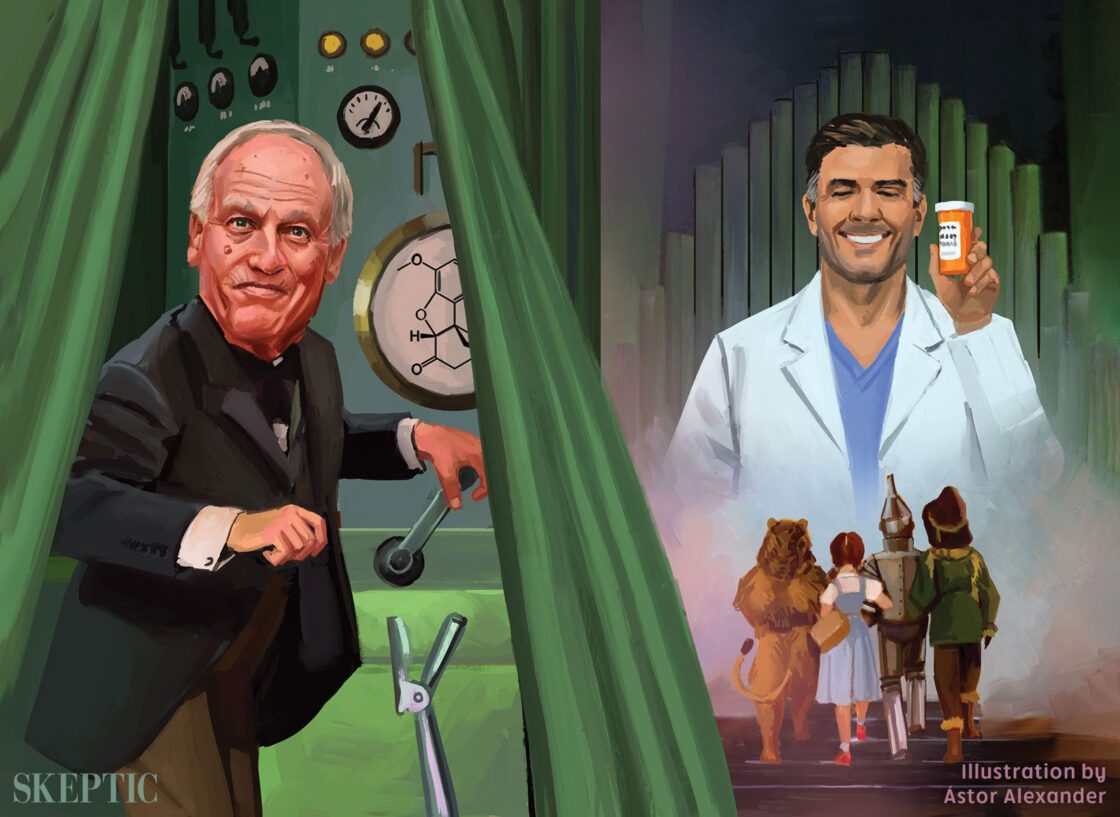
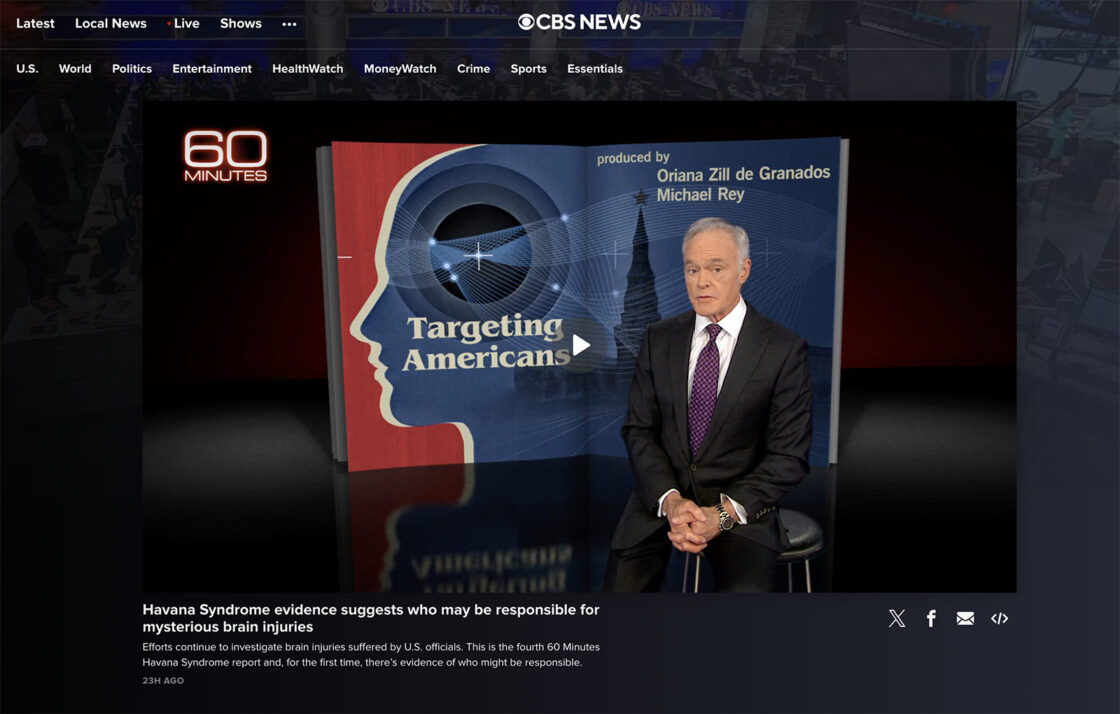
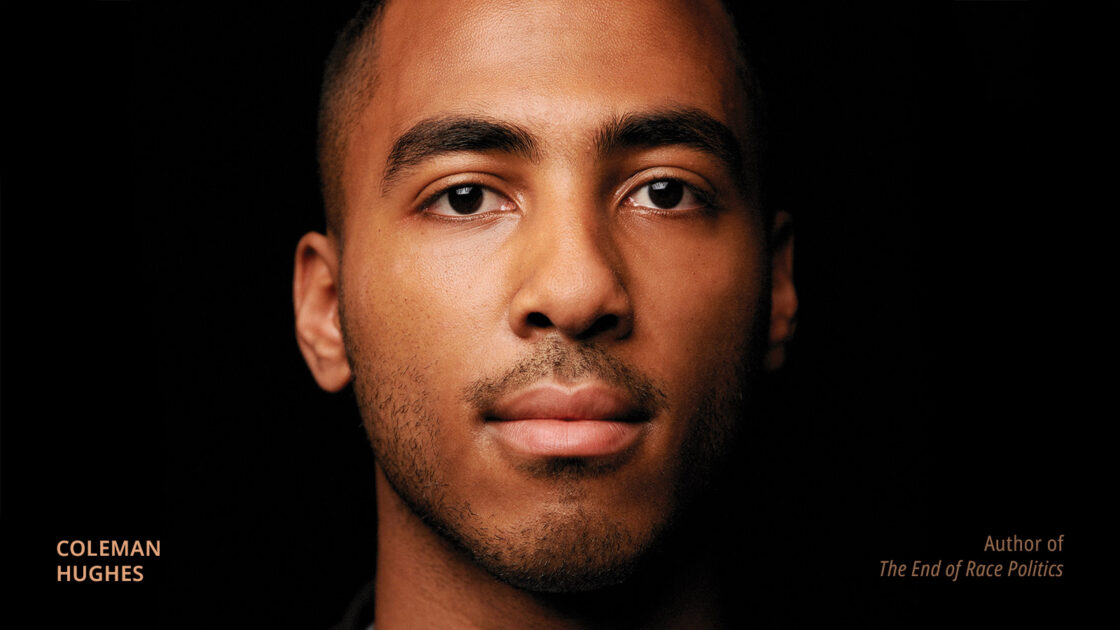

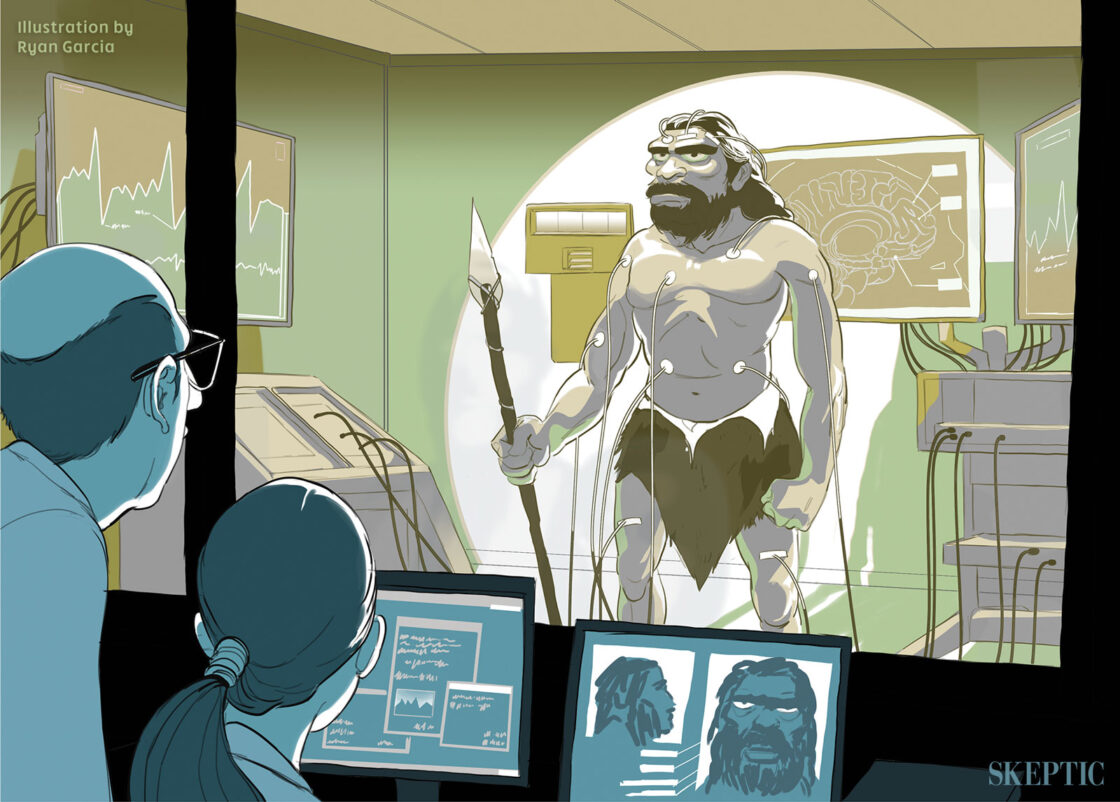
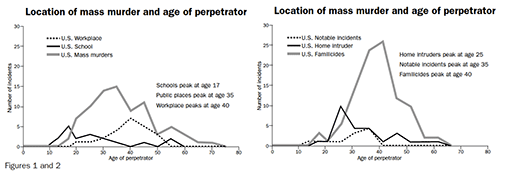


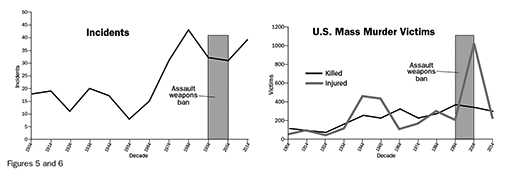












The problem with this article is that it starts with a bold statement of fact without any data to back it up.
“The list of mass murders in America grows and grows.” Where is the evidence for this statement. As a rebuttal I’ll say that you should read the only book that details all “Mass Shootings” in the last 100 years in the USA. It is “Mass Murder in the United States: A History” by Grant Duwe. His data shows;
Mass Public Shootings per Decade
1900s : 0
1910s: 2
1920s: 2
1930s: 9
1940s: 8
1950s: 1
1960s: 6
1970s: 13
1980s: 32
1990s: 42
2000s: 28
2010s (three years): 14
According to that data mass shootings are actually on the decrease.
As far as gun control vs number of Homicides I suggest you look at Harvard’s study “Would Banning Firearms Reduce Murder and Suicide?”
http://www.law.harvard.edu/students/orgs/jlpp/Vol30_No2_KatesMauseronline.pdf (PDF)
Summary, European countries with stricter gun control laws than the USA have higher rates of violent crime
(hint:read the entire paper for lots of good examples of countries with strict gun control and those that have high percentage of legal gun ownership and their crime rates)
I would suggest that you read actual, reliable studies on the subject done by experts in the field instead of articles on wikipedia. ;)
Starting an article with a bold statement without the proof to back it up and then assuming that fact is true is an indication, at least to a skeptic like me, that the author has an agenda to push.
Excellent article. One of the best on the subject, fact based, free of ideology or nonsense. And let me answer the comment from Joe king: there are two factors involved: 1) The number of mentally ill is indeed higher in the US than in other developed countries because people here live much more lonely lives. The social links are vastly higher abroad. And loneliness and depression tend to breed more serious mental problems. 2) Other countries have a vastly better government-sponsored (and yes, taxpayer supported) mental health systems. We used to have a good one. But President Reagan in his infinite un-wisdom, in order to reduce taxes by about $5 per person, completely abandoned it. The real choice is: 1) Pay taxes, have safer streets, more educated and happier society, or 2) Pay less taxes, have mentally ill roam the streets, and some commit mass murders. I prefer (1). It is called the price of civilization.
Best regards.
The only way people murder is because their alone,scared but its all based on were they grew up and how they were raised cause u follow in your.pers foot steps
Some of the comments and replies are excellent, but is there a way I can print those as I do with the article itself.
The first half of the article provides evidence that gun control doesn’t work, that gun related deaths have been declining for decades, and the previous AWB was ineffective.
Then at about the time the author separates handguns from semiautomatic firearms (why did he do this?), he then goes on to make suggestions that would directly violate many Constitutional rights of citizens.
“… states that allow citizens to carry concealed weapons should also establish annual training requirements to include basic gun safety and how to deescalate arguments and other confrontations without resorting to violence. Otherwise, allowing untrained citizens to carry concealed weapons and engage in a fight as if they were a police officer clearly results in more homicide deaths than mass murder deaths per year.”
The majority of states ALREADY require certified training before a concealed carry permit is issued, and the majority of people who DO carry concealed make it a point to receive as much ongoing training as possible. In other words, untrained citizens are not allowed to carry concealed, and to assume that if a person is untrained they are automatically egotistical and violent is a non sequitur.
“… legislation could require a gun owner to either pay for private liability insurance prior to purchasing or transferring ownership of a weapon… or pay a federal tax for the government to compensate victims of gun violence directly. Like all insurance, this would allow citizens to engage in potentially risky behavior and put a price on the risk to be paid by the people creating the risk.”
There are a few problems with that. First, insurance is based on a person’s risk of loss. If Person #1 lives in a rural area and person #2 lives in an urban environment, it doesn’t take a genius to figure out that the majority of violent crime comes from large cities and that Person #2 would be more likely to be involved in a shooting. This is not to say that Person #2 would be more likely to be the shooter, but because of how risk/liability is calculated Person #2 might not be able to afford their own firearm when they are the ones with the greatest need to do so for personal protection.
Second, firearms already have an excise tax applied to them as part of the purchase price, and any additional tax on ownership would be taxing a right, which is unconstitutional (like a poll tax). And third, who determines how “risky” a person’s ownership is? Is a Ruger Mk III pistol more “risky” than a Glock 26? Is a Mini 14 more “risky” than an AR-15 or M1 Garand? The risk is determined by the USER, not the firearm itself.
“… implementing yearly mental health checkups. One way to enforce this would be to enact a school and workplace mandate for students and workers, especially men under 50 who are the most at risk population to commit homicide, mass murder, and other irreversible acts of violence.”
So, targeting and vilifying a section of society as “potential murderers” is acceptable? Reminds me of the movie Minority Report where they arrested potential criminals before they did anything wrong. Also reminds me of the idea that a certain section of society that was mandated to wear stars of David to identify them as “lesser human beings.” Thanks, but no thanks.
“The department of Health and Human Services (HHS) or a private aid agency could set up an intervention hotline where people who see someone with a mental health issue can call in and request an intervention. Then HHS could dispatch a social worker to interview and assess the individual.”
There is so much potential for abuse with that idea. Remember McCarthyism during the Red Scare? That is not what free citizens should accept.
“Most people are fixated on guns and gun laws, but what about prevention? These analyses show the primary risk factors for a person to commit mass murder are being a male under the age of 35 who suffers from violent delusions and whose condition is likely deteriorating over the course of one or more years. If we want to prevent mass murder, we must address mental health care for people with delusions and schizophrenia.”
Ah, now here is an interesting point. It’s not the approximately 100 million lawful gun owners causing the problem, is it? Incidents of mass shootings have common qualities, and one of them is irrational violent urges and behavior. But WHY?
It should be obvious that a inanimate object like a firearm has no power to influence human free will, so it therefore cannot be the cause of violent behavior. It is just a tool used to carry out said behavior. So if there was something that DID have a known ability to physically and chemically alter a person’s emotions and behavior, wouldn’t that be something to look into?
Antidepressants, specifically a group of drugs known as SSRIs, have been known to cause violent, psychotic behavior in about 1-2% of people who use them. The FDA mandated in 2004 to include such warnings on the labels of Prozac, Paxil, Celexa, Lexapro, Zoloft, etc after a number of adverse events were reported, including suicidal behavior, depression, agitation, homicidal thoughts, hallucinations, and psychosis.
Eric Harris, Kip Kinkel, Seung-Hui Cho, James Holmes and many others were taking SSRIs when they committed random violence. I’m not saying there aren’t millions who don’t benefit from these drugs, but with 30+ million people taking them in this country even if we considered a much smaller adverse effect rate of 0.01%, that would still be 3,000 people who randomly “snap” and go on violent rampages. It bears considering that these drugs, which are barely ever heard about, could be linked to these random, irrational acts of violence.
This is an interesting study regarding SSRIs, and all one has to do is put “SSRI violence” into Google and start looking around:
http://www.plosone.org/article/info%3Adoi%2F10.1371%2Fjournal.pone.0015337
I am not familiar with skeptic.com and encountered this essay after linking over here on an unrelated inquiry. I must say that I was surprised that a work of such low caliber was published on what I assume to be one of the leading mainstream websites representing the community of skeptics and critical thinking enthusiasts, and indeed even as far as I can tell the communities print edition as well. I was confused enough that I found myself researching further to see if skeptic.com was in fact one of the many cryptic gun-industry propaganda efforts or a broader partisan group.
To be sure, it is highly consistent with a skeptical, objective, and critical approach to point out the relatively obvious: that the propaganda on the left with respect to a direct connection between assault-rifle legislation, for instance, and public instances of mass-murder is just that: propaganda. There is little if any evidence to suggest that a partial or complete ban on assault rifles would reduce the frequency or severity of these already extremely rare forms of homicide, and whatever one might believe about gun rights and the overall consequences of the second amendment, no such evidence exists.
However, this article goes much, much, further than pointing out that the alleged connection between assault weapons laws and mass murder is not supported by the evidence (such a debunking requires little more than a paragraph and an original source of data to reference). It attempts to prove, through an amateurish collection of pseudoscience, anecdotes, unqualified logical propositions, and perhaps strangest of all, attempts to support conclusions and data with general references (where given at all) to wikipedia (the whole of wikipedia!) as if wikipedia is in and of itself something that can be referenced. “Just check wikipedia for examples!'” is not a legitimate source of information to prove a propositional statement, lol!
It is hardly a secret that non-causal links, cryptic references and general appeals to pseudoscience are used by both sides of the political issue with respect to gun laws and that gun laws are hardly the only factor in the occurence and severity of mass murder, and that those using recent public murders in the US to support an assault weapons ban are making a false causal assertion. But, pointing out one’s opponent is wrong is not proof that everything one says is therefore right! The rest of this endless manifesto of unreferenced (or over-generally referenced – you cannot reference an article about math in place of a mathematical proof of something – you must prove the statement YOU are making), uncheckable, overly broad and often silly statements about everything from the age to the difference between a delusion and a hallucination, to assertions as to the ‘motives of most of…being probably…because it seems right’….none of these statements which make up 95% of this endless piece of nonsense are unsupported, unexplained, uncheckable, propostiions, a bunch of pseudoscientific dribble designed to support the real thesis of this piece, that gun control is bad and the typical gun lobby crap.
I won’t go through each and every endless statement and restatement because none of it has any inline citations (again, “check wikipedia for examples to see I am right IS NOT AN ACCEPTABLE FORM OF PROOF, ESPECIALLY WHEN MAKING BROAD CLAIMS NOT COMMONLY ACCEPTED). The burden of proof is on the author to support his claims and his statements and conclusions – and no proof is given for all the endless propositional statements which he then re-references in his ‘conclusion’. LOL!. What’s got me confused here is how SKEPTIC.COM missed all of this? This is basic stuff in terms of even freshman-level academic writing, and while technically the work ‘debunks’ something – the non-connection between mass-murder and assault-rifle laws – it clearly does so only to provide Ad Hominem horizontal credibility for the authors equally unproven statements and claims. He debunks 1 piece of junk, and slips in 20 or 30 of his own in the process? How does a “Skeptic’ website fall for a trojan-horse like this? Baffling to me. What is the editorial process here?
Its like saying, here’s proof that there’s no Christian God….and why that means Allah is the one and only God! LOL!
If the writer would like to attempt a serious scholarly article explaining why the association between guns per capita and their availablity and people getting shot – you know, the one that has been affirmed and reaffirmed by every peer reviewed, controlled and non-NRA funded study ever done – I’ll listen to and happily check his facts and explanations with an open mind – Maybe there is a major factor (besides guns) in shootings that the world and the massive majority of credible researchers have missed for a century. Maybe it’s maple syrup behind the tendency for Canadians to get shot a whole lot less in Canada, who knows…But this big long piece of nonsense references nothing at all, its the opposite of a skeptical, reasoned, or objective approach. Proving guns aren’t the cause of shootings takes more than proving that people will stretch facts because they don’t like assault weapons. Why is this is published in a skeptic inquiry publication?
Hey – If you disagree with me, just check wikipedia for examples of why he is wrong and therefore whatever I say is right, lol!
Mike, the author offers 35 footnotes to back up his piece and you offer none to support your position but that would be a problem since your posting is just a series of naïve insults of another person’s good work.
You have been identified as a troll. Move on, nothing to see here…….
One problem with mass murders such as Sandy Hook, Tempe AZ, Virginia Tech, is the element of surprise. Even if there are armed guards, citizens carrying concealed, etc. the element of surprise makes it unlikely that the mass murderer will be shot at the beginning of the attack. People caught off guard tend to freeze or hide or play dead. Guns readily available in teachers purses can be discovered by young children or perpetrators and these type of shootings are all too common.
I’m not clear on why I should pay liability insurance on my inanimate object, because a felon or mentally ill person might illegally use the same object.
Cars require insurance only when being operated, not when being stored or transported.
A parallel to your suggestion would be to place ADDITIONAL insurance on people who OWN cars to cover drunk driving incidents. You are collectivizing guilt in a form of prior restraint.
Which, fortunately, you will find is unconstitutional.
Because many people aren’t “felons” and ARE the oft-repeated “law abiding citizens” until they commit their first felony, and everyone always imagines it’s the “other” person who is the danger.
Human psychology and anthropology render that egocentric delusion asunder.
You do pay liability insurance on inanimate objects if you own a home. When somebody trips and fails in your house or apartment, get’s nerve damage, and sues you for $3M you had better have insurance or be prepared for bankruptcy. If you have any assets at all, you had better have some umbrella liability because your basic liability on your car or home will not cover it all. Complaining that the government will make you get insurance is a childish as complain that the government will make you get health insurance. Arguments like that are why liberals think we need a nanny state.
The reality is that right now, if some bystander gets injured when you justifiably shoot another person, you’ll be giving your house and your children’s college fund to them if you don’t have insurance. Maybe the state needs to look after your kinds if you won’t.
When you get served with papers one Saturday morning like I did, you’ll see the light but it may be a bit too late then.
While I find your overall analysis both interesting and plausible, you overlook the dog that didn’t bark: A nonzero number of mass murders in the United States have been *prevented* by armed civilians who intervened before the murderer managed to cross the statistical threshold. For an example off the top of my head, see the New Life Church shooting in 2007, in which an armed member confronted a man who had shot 2 victims and then committed suicide; this doesn’t show up in your statistics, but it certainly would have been a mass murder in her absence. Additionally, do your numbers distinguish between police or other law enforcement in their official capacity and their off-duty actions as private citizens (see the San Antonio theater shooting)?
Very interesting write-up. You’ve made some great analyses and made some potentially useful suggestions, but … here’s the problem:
‘A well regulated militia being necessary to the security of a free state, the right of the people to keep and bear arms shall not be infringed.’
Your suggestions all are endanger of violating the ‘shall not be infringed’ clause. i have no better suggestions. I wish the next sentence were not true. We absolutely need the Second Amendment to protect us from a tyrannical government … à la sic semper tyrannis. I fear tyrants more than I fear mass murders and I would love to see an analysis of mass murders by governments versus individuals. I can’t help but believe that government has caused many, many more murders. Fear the Pol Pots. Fear the Mao Zedongs. Fear the Abraham Lincolns. Fear the Ulysses S. Grants. Fear the George W. Bushs. Fear the Barack H. Obamas.
Reading views about tyrants in juxtaposition with the part of article about paranoid scitsophrenics with access to guns being the problem makes me a bit nervous.
You think? :)
The conveniently non-clinical reduction of mass murderers into the “delusional” category helps make the case for varying non-sequiturs in this article, but completely misses ou on the fact that numerous other things (e.g. fundamental theism, tyranny paranoia, firearm objectophilia, conspiracy theories, religious glorification of amendments once they’ve expired their functionality…) also encompass the incredibly lax definition of “delusional” presented here.
The convenient a priori position articles like these begin with is the notion that since the 2nd amendment already exists (and can be construed to mean something very different than the context it was originally meant to convey) and since the guns are also already here, somehow the burden of proof must lie with the unfailing reasons why we SHOULD’NT have (semi-automatic weapons, or high-powered firearms)…in the same way theists suggest the burden of proof lies with atheism.
Nevermind the fact that this article naively ignores the actual culture of gun ownership in the US (which is the issue far more than the guns themselves).
1.So, what you are saying is that you will only violently overthrow your government if it refuses to make the weapons you wish to keep on hand in order to overthrow the government legal under the laws of your government?
2. You believe yourself to be a skeptic and thereby a rational actor in the world (or, your toilet doesn’t work but your ‘k’ key sticks for some reason) but reason for you is first entirely subordinate to what you accept as a non-negotiable basic, irreducible, bottom-line axiom – that the U.S. constitution’s amendments are not amendable under any circumstances. Therefore, though you are all for being reasonable, you cannot countenance or even acknowledge any argument or discussion of the U.S. gun laws in modern day times where such discussion may include the possibility that an amendment (as specifically provided for by the founding fathers in the constitution you sort-of believe in but not that part though) should be added or repealed (such as the second amendment) nor can any discussion of a change in the constitution (for instance, the addition or repeal of an amendment as outlined in the constitution) take place under any circumstances, unfortunately, as you see the constitution (and it’s amendments) is (now) irreducible, unchangeable, as-perfect-as-could-ever-be (notwithstanding, of course, the part in the constitution which provides for amendments – that’s bullshit I guess) but otherwise, the constitution (excluding the part about it being not perfect and therefore amendable) is perfect and anything the government, as defined by the constitution, might seek to change in the constitution, would be, uh, unconstitutional, because you cannot support the government you do not need to overthrow.
3. If I pay all costs of medication and therapy for any and all cognitive dissonance you are experiencing as a result of the government’s assault on you and your loved ones, who are simply trying to protect yourselves from tyranny by overthrowing any government which seeks to stop you from unilaterally overthrowing it, will you warn me with 48 hours notice when are where you plan on going psycho and defending your enemies from yourself in theory, so I don’t get hit in the crossfire?
4. Nothing like a straightforward, reasoned, debate to get the mind going.
You do realize that their conclusions do not necessarily have to line up with the second amendment? It’s a scientific article–science does not have to conform to what we think is correct or moral.
The second amendment argument is not an argument of data and facts. It is a political condition. The facts and proposed approaches in this article are matters of cause and effect discussion. I see the political issues with implementing an approach as partially separate from the positive or negative effect of the approach. This article seems to me to be more of an intellectual discussion of the issues and not a set of details proposed changes.
The effect of specific legislation is a topic of a much larger magnitude of discussion with included unintended consequences, publish costs, and enforcement.
I don’t think the second amendment was addressed at all in the article and I think the magnitude of the second amendment’s effect of the problem is widely recognized.
Very intresting. particularly what you conclude about useless automatic weapons control.
I have one question though. Why do you think that mass murders have a higher rate in the US than elsewhere? As I understand delusions and schizophrenia rate around the world at the same rates.
Regrads
good question, i’m also interested to see the answer. why the UK, for example, doesn’t have the same rate?
The U.K. does not collect data the way we do here. A murder is only counted if somebody is convicted of a crime, not a total body count. This is how they make their citizens more comfortable. If you you at coroner records and compare them to the U.S., the murder rate is almost the same. The U.K. published numbers are simply lies for political purposes.
To go one step further, we define a mass shooting as four or more people dead people over an indeterminate amount of time and few countries follow this strict protocol when compiling data. It is unlikely that we will every have apples to apples data, although the consensus with people who research the data is that the rate is basically the same in developed countries supporting the “rule of large numbers”.